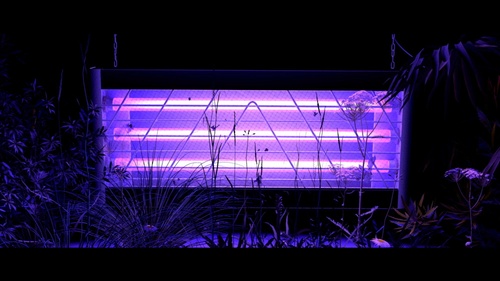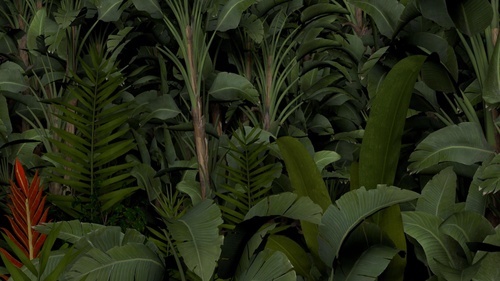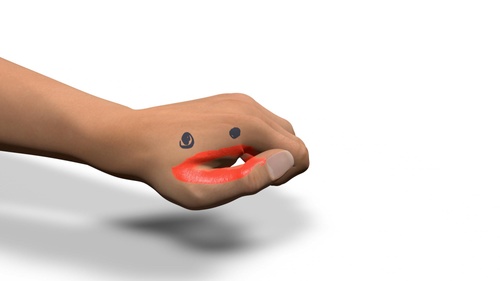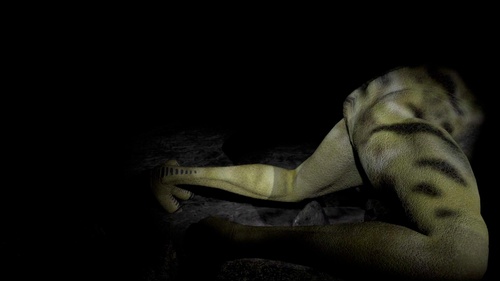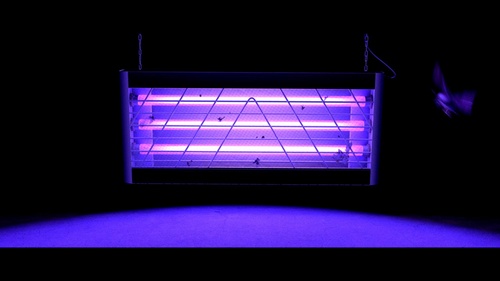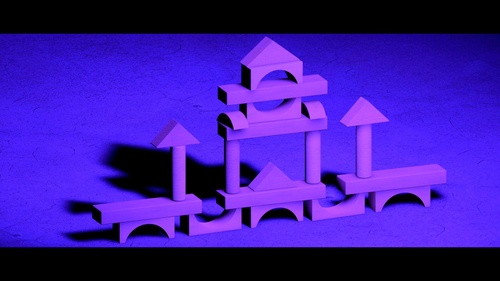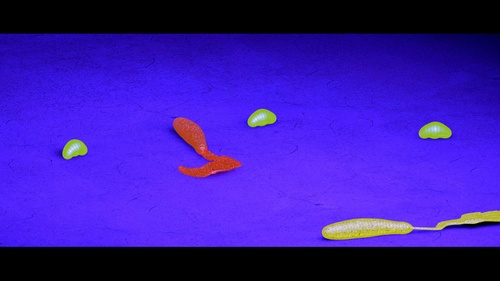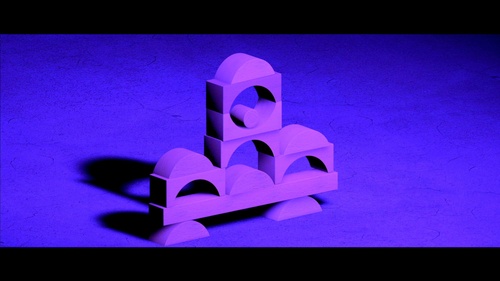Screens Series: Gregory Kalliche
Screens Series: Gregory Kalliche
In Gregory Kalliche’s works, crossings between manmade and natural worlds occur in vibrant high definition. Riffing on the conventions of blockbuster movies and trailers, the videos are splashy affairs, with jump cuts, pulsing countdowns, and awesome catastrophes looming just around the corner. They conjure abundance: plants snake out of the ground, flowers erupt in full bloom, and droplets of water slide down poolside cocktail glasses. Elements buzz, chime, vanish, and reappear. Everything seems on the verge of toppling.
Often employing computer-generated imagery (CGI), Kalliche has a penchant for animating objects that can in turn be used to illustrate other things. Wooden blocks leap into formations that evoke Roman aqueducts and Mesopotamian temples; trembling gummy candies bend into the shape of Soviet sickles; a hand contorts to cast the shadow of a barking dog. Following the logic of childhood games, the joy is as much in watching everything come together as it is in seeing it fall apart—when, for example, the stacked blocks are gleefully smacked down.
Kalliche’s video Find something to relate to (2015) opens with the titular command, followed by a chorus of voices offering possibilities. When the voices intone “hands,” a gardening glove appears; “lips” produces a face painted onto the side of a hand; with “eyes,” googly eyes roll; a tube connected to a rectangular block emerges with the phrase “things that look like a foot.” At night, the narrator tells us, “shrubs take on vivid profiles” under just the right light and “plants sleep standing up. If their posture strikes just the right contour, the plants may receive some special attention”—particularly from the canines who mistake their silhouettes for imminent danger. This phenomenon, known as pareidolia, involves seeing faces and recognizable forms in utterly random things: clouds, stains, rocks, or spilled liquids, for instance. The Rorschach test capitalizes on this impulse, as do divination rituals that uncover meaning in the arrangement of tea leaves or coffee grounds, the flickering of candlelight or dripping wax. We want to see something familiar in even the most alien forms. Yet this kind of misrecognition can be perilous. Near the end of The Greatest Arrogance (2016), a fly joyfully darts toward alluring blue lights, which it mistakes for moonlight. Its elated ascent is followed by the sharp spark of the object of its desire: a bug zapper. In Kalliche’s universe, the end is always near.
Gregory Kalliche (b. 1984, Fort Lauderdale, FL) has exhibited works in solo and group exhibitions and screenings at ASHES/ASHES, San Francisco (2017); Knockdown Center, Queens (2016); MuseumofAmericabooks, Brooklyn (2016); Avalanche, London (2016); Mama Shelter in conjunction with the Istanbul Biennial, Turkey (2015); the Suzanne Geiss Company, New York (2014); and Arcadia Missa, London (2014).
Kalliche’s video The Greatest Arrogance will be screened in the New Museum Theater on Wednesdays between July 18 and September 20.
